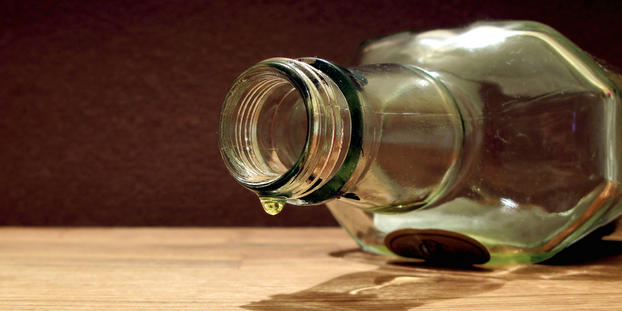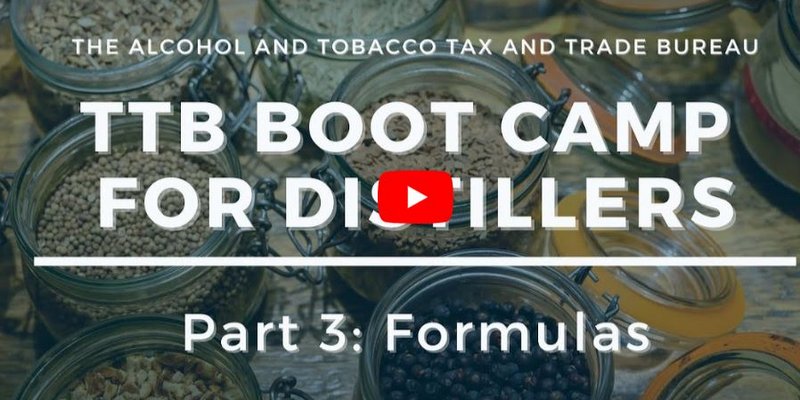Craft beer is not the only alcoholic craft beverage on the climb these days. Craft spirits have been on the rise too, the only problem is you never seem to have those big fancy economic numbers to show just HOW BIG it is like you do in craft beer. The next couple hundred words are just about how much of a shame that is
Psyche! We totally have the answers now.
The American Craft Spirits Association (ASCA), the International Wine and Spirits Research (IWSR), and Park Street got to together for a year-long project to quantify the number, size, and impact of craft spirits producers in the U.S., something they called the Craft Spirits Data Project.
Craft Spirits Data Project Defined
For the purposes of the Project, U.S. craft spirits were defined as distilled spirits that are produced in the U.S. by licensed producers that have not removed more than 750,000 proof gallons (or 394,317 9L cases) from bond, market themselves as craft, are not controlled by a large supplier, and have no proven violation of the ACSA Code of Ethics.
Craft Spirits Data Project Findings
- The U.S. craft spirits industry is growing rapidly. As of August 2016, there were 1,315 craft distillers active in the U.S. The U.S. craft spirits market reached 4.9 million cases and $2.4 billion in retail sales in 2015, growing at a compound annual growth rate (CAGR) of 27.4 percent in volume and 27.9 percent in value between 2010 and 2015. The market share of U.S. craft spirits reached 2.2 percent in volume and 3.0 percent in value in 2015, up from 0.8 percent and 1.1 percent in 2010, respectively.
- Exports offer an additional runway for growth. Exports of U.S. craft spirits reached 523,000 cases in 2015, adding more than 10% of additional volume to U.S. craft distiller total sales.
- Employment and investment are on the rise among craft distillers. In 2016, the industry employed over 12,000 full-time employees (FTEs). Investments by the U.S. craft industry have reached close to $300 million in 2015, which primarily covered the build out of tasting rooms and other visitor experiences, equipment to increase production capacity, and associated labor costs.
RELATED: Your Ultimate 2016 Great American Beer Fest recap
Direct sales are huge
Direct sales and home state sales are crucial for small craft spirits producers. Direct sales at the distillery are important for all craft distillers but especially important for small craft producers (between 0 and 100,000 proof gallons removed from bond annually), where direct sales make up 25 percent of all total sales. Home state sales outside the distillery for small producers comprise 67percent of all sales.
Where are these spirits of which you speak?
The U.S. craft distilling market is fairly concentrated. Geographically, the market is concentrated as well. The top five states by number of craft distilleries (CA, NY, WA, CO & TX) make up 35.6% of U.S. craft distiller universe, and the next five states (OR, PA, NC, OH, FL) comprise an additional 16.5% of the market.
Can it match craft beer?
There is the potential for craft spirits to achieve market share parity with craft beer, the research says. Many surveyed retailers and wholesalers see the potential for craft spirits to perform in line or better than craft beer over time. With craft beer market share currently at 11 percent in the U.S., the craft spirits market is expected to continue to grow rapidly.
Uh, how?
Surveyed distillers, retailers, and wholesalers provided actionable recommendations to the U.S. craft spirits industry and its regulators to help the industry continue to grow. Craft spirits producers point to excise tax parity as one of the most critical keys to success in the future. (Everyone hates excise taxes).
Taxes on distilled spirits are among the nation’s highest, comprising 54 percent of the typical spirits product’s purchase price. As ACSA has previously emphasized, craft spirits producers remain disadvantaged compared to our nation’s craft brewers and small wineries that receive a significant reduction in their Federal Excise Tax (FET) rate. Today, a craft spirits producer pays 6 times more FET than a craft brewer and 17 times more FET than a small winery for equal quantities of beverage alcohol.
Now the boring stuff about methodology
Together, the ACSA, IWSR, and Park Street launched the Craft Spirits Data Project in October 2015. Data collection began in January 2016 and was completed in August, 2016. The Project collected data from spirits consumers, DSPs, distributors, and on- and off-premise retailers.
In addition to analyzing craft spirits brand perceptions and consumption drivers at the consumer level, the study collects data on craft distiller production size and patterns, sources and amounts of revenue, and the category’s overall economic impact within the spirits industry. The Project also collects data on craft spirits business size, patterns and outlook on the distributor level and assesses craft spirits business size and outlook by premise type at retail.
When estimating the number of producers behind the U.S. craft spirits production, the project team relied on a combination of official data released by regulatory authorities, survey data, other industry data sources both national (e.g., NABCA, TTB) and regional (e.g., Guilds), as well as interviews and team assessments using the craft distiller definition.
RELATED: Tips to protect barrel-aged beer during the brewing and aging process







It’s growing, “bigly.” >> What is the growth potential of craft spirits in the U.S.? https://t.co/o2nXAgUfhq @CraftBrewingBiz
Surveyed distillers, retailers, and wholesalers provided recommendations to the U.S. craft spirits industry to help…https://t.co/KcI01TyPkS
As of August 2016, there were 1,315 craft distillers active in the U.S.! https://t.co/KcI01Thetk
RT @BevvShop: What is the growth potential of craft spirits in the U.S.? https://t.co/QwNEFBOolN @craftbrewingbiz @CraftSpiritsUS @Distilli…
What is the growth potential for craft spirits in the U.S.? https://t.co/k5uPr21z10
RT BevvShop “What is the growth potential of craft spirits in the U.S.? https://t.co/VaObiIh15x craftbrewingbiz C… https://t.co/Mx8OxI8DDK“
What is the growth potential of craft spirits in the U.S.? https://t.co/QwNEFBOolN @craftbrewingbiz @CraftSpiritsUS… https://t.co/Nvx1O6QA4d
RT @eGrandstand: Despite roadblocks, #craftspirits industry sees rapid growth.
We’re a proud partner to #craftdistillers in the U.S.
https:…
Despite roadblocks, #craftspirits industry sees rapid growth.
We’re a proud partner to #craftdistillers in the U.S.
https://t.co/phWgUlCmX0
RT @HydeWhiskey: https://t.co/4gAUpijzgs
RT @HydeWhiskey: https://t.co/4gAUpijzgs
https://t.co/4gAUpijzgs
What is the growth potential of #craftspirits in the U.S.? https://t.co/7ZsWSaosQL
RT @CraftBrewingBiz: What is the growth potential of craft spirits in the U.S.? https://t.co/REjlPtMEGd
What is the growth potential of craft spirits in the U.S.? https://t.co/EYRFfjYxdP https://t.co/iEtGdl6M4Y
Stephen Conway liked this on Facebook.
RT @CraftBrewingBiz: What is the growth potential of craft spirits in the U.S.? https://t.co/REjlPtMEGd
What is the growth potential of craft spirits in the U.S.? https://t.co/dwjJNPacRE via @craftbrewingbiz
Santiago M. Kaderian liked this on Facebook.
What is the growth potential of craft spirits in the U.S.? https://t.co/nRyPNHbjPx #beer #craftbeer